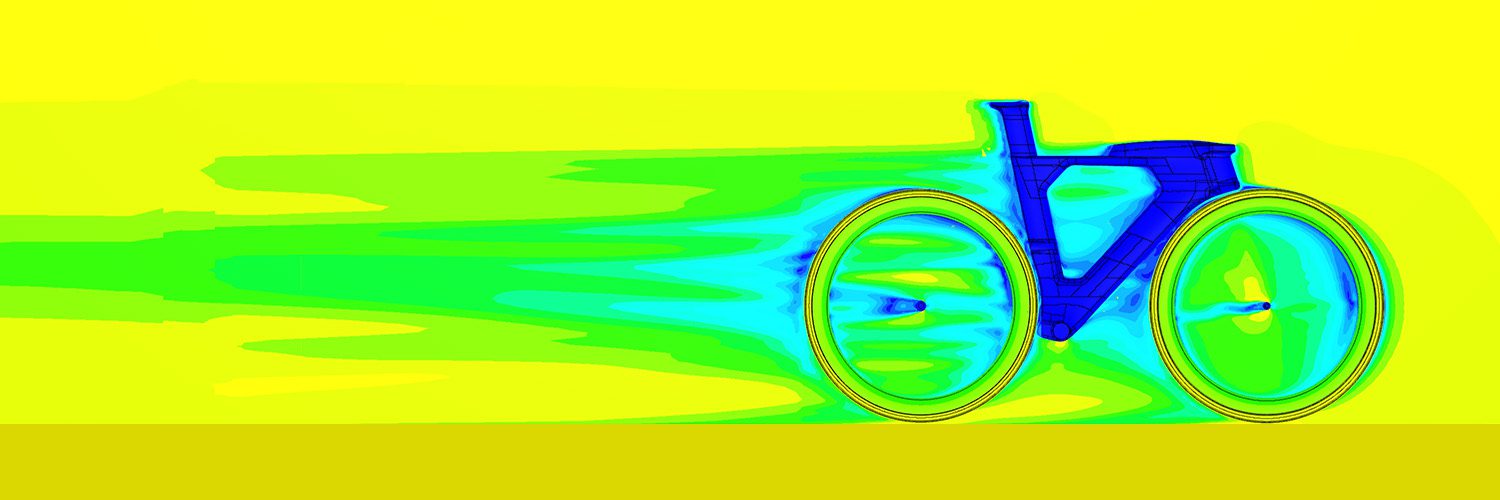
Hunt Bike Wheels exists because the wheels needed by performance riders weren’t readily available, so they assembled a team of talented, passionate riders with a wealth of industry experience and set out to bring the latest, most practical, forward-thinking technology in all things round. Their mission is to serve devoted riders with the highest-performing products, backed by best-in-class rider support. Hunt Bike Wheels creates high-performance wheel and bicycle products for its customers and are pushing the limits of wheel aerodynamics, mechanical, and materials engineering by using the latest design and manufacturing technology.
Hunt Bike Wheels is a company that designs and manufactures high-performance bicycle wheels. The company uses a combination of computational fluid dynamics (CFD) and finite element analysis (FEA) to simulate the flow of fluids and stress around its wheels, which allows the company to optimize the design of its wheels for aerodynamics, strength, and durability.
CFD is a numerical method that is used to simulate the flow of fluids around objects. It allows engineers to understand how air flows around a bicycle wheel and how this affects the wheel’s performance, for example.
The company’s wheels are used by a wide range of cyclists, including recreational cyclists, racers, and commuters. Hunt Bike Wheels is a direct-to-consumer business with wheels selling upwards of £300-550 per wheel (pair) and carbon fiber models up to £1949, meaning that performance and durability are high expectations from their customer base. SimScale helps to optimize the design performance before too much is spent on physical prototyping and testing.
Hunt Bike Wheels has been using CFD for the past three years to design its rim profiles. The company was originally using OpenFOAM, an open-source CFD package, to run steady-state simulations with turbulence modeling. Typical simulations were run on a 12-million cell size mesh where each cell was approximately 0.000125 m (0.125 mm) in height and width. The simulations ran for 5-6 hours for yaw angles between -20 and +20 degrees. This meant that each simulation could test a single wheel at a single yaw angle at a time (sequentially). To validate the CFD results, Hunt Bike Wheels was using its single-wheel wind tunnel test results and industry-available literature for this example. The open-source software, however, was difficult to use and time-consuming to set up. Wind tunnel testing was also expensive and time-intensive.
SimScale has allowed Hunt Bike Wheels to significantly reduce the time it takes to develop new wheels. The company can now iterate on designs much more quickly, and it can make more informed decisions about the design of its wheels. Not only this but through SimScale they also have access to multiple types of physics such as FEA and vibration analysis all in one platform using a single CAD model.
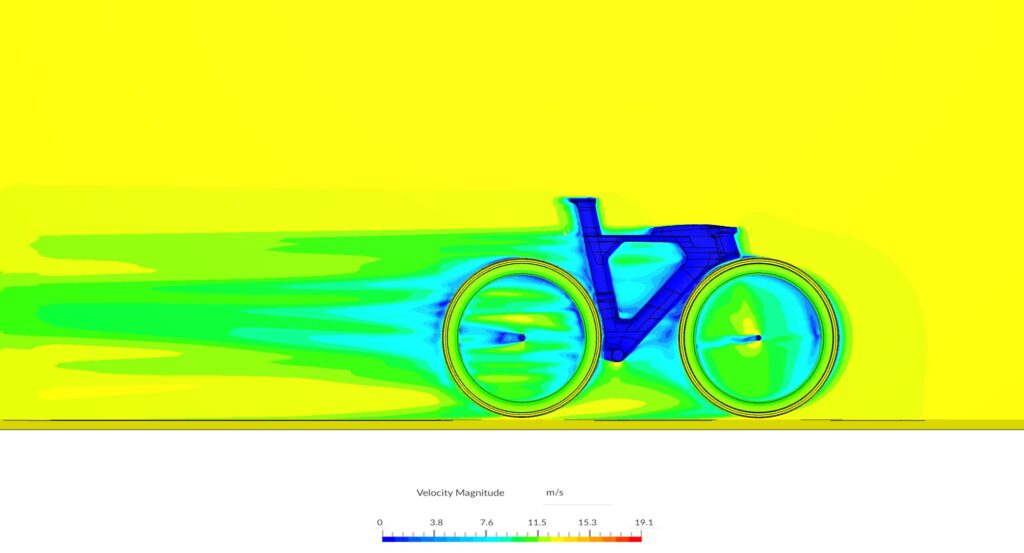
For some models such as the Limitless deep section carbon road products, they were using an Airbus facility in the south of Germany for wind tunnel testing at scale which required expensive 3D printed full-scale models of the wheels and bikes. At times they also had to use a small wind tunnel at Silverstone, UK for smaller models which required extensive manual work to modify the testing rig each time. In these situations, the CFD in SimScale has proven invaluable.
The use of simulation has allowed Hunt Bike Wheels to improve the performance of its wheels. The company has been able to reduce drag and improve aerodynamics by predicting draft and lift forces, which has resulted in increased speed and efficiency. CFD has also allowed the company to optimize the rim profiles for different riding conditions and tire/tread sizes and patterns. Turn moments on the wheel, side forces on axles, and aerodynamic stability are all simulated and a typical simulation design project might have 40-50 design variants that can be simulated in parallel using the virtually unlimited computing power of the cloud.
This has resulted in improved performance for cyclists and has helped Hunt Bike Wheels to become a leader in the bicycle wheel industry. Designers at Hunt Bike Wheels use Onshape to create and modify its CAD models easily, which is important for the iterative design process. SimScale has a simple integration with Onshape where users can simply push the Onshape model directly into SimScale and begin simulating.
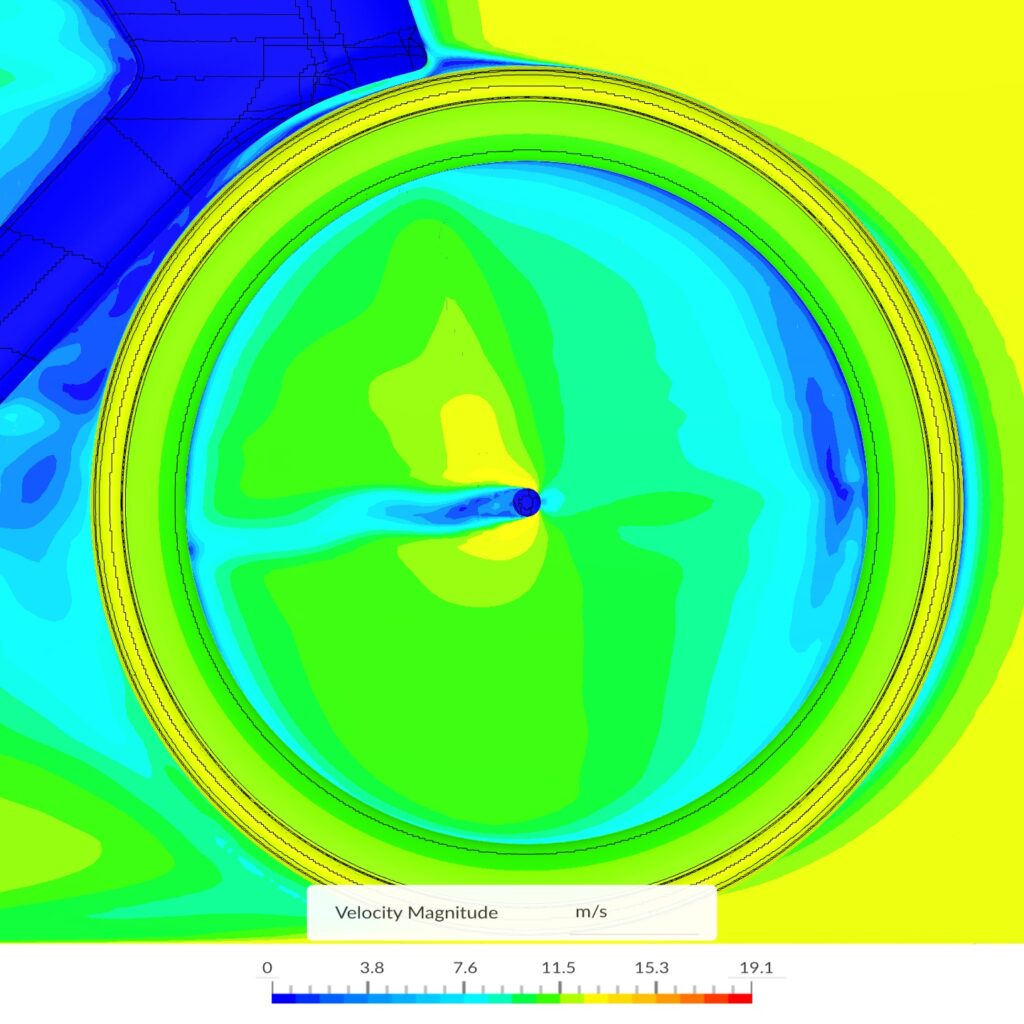
The company also uses FEA simulation to optimize the design of its wheels for strength and durability. The company’s FEA simulations are used to predict the stresses on its wheels under different loading conditions. This information is used to design wheels that are strong enough to withstand the forces encountered during use. With FEA, they are mainly performing linear static and dynamic analyses such as impact tests and deflection due to load on the wheel spokes and contacts. A 30 degrees segment of the wheel structures is modeled in SimScale and they mimic real-world loads in SimScale.
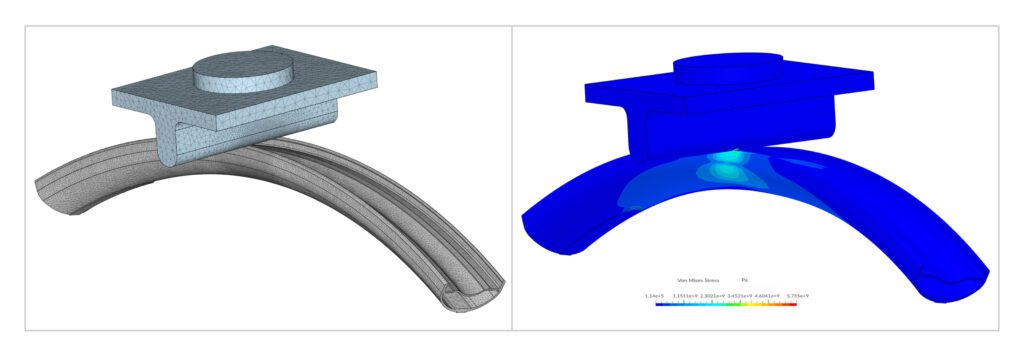
Some mountain bike products can undergo significant impact loads when riding cross-country. The FEA studies replicate physical tests in-house which are effectively impact tests according to international standards. Each wheel must be impact tested in the lab before moving to production and the molds for physical testing cost $3000 USD per piece which are then discarded. Using simulation drastically reduces the number of models needed as they are able to disqualify poor-performing design candidates earlier in the development process. This has saved actual cost and time and allowed the engineers to focus more on optimizing high-performing designs.
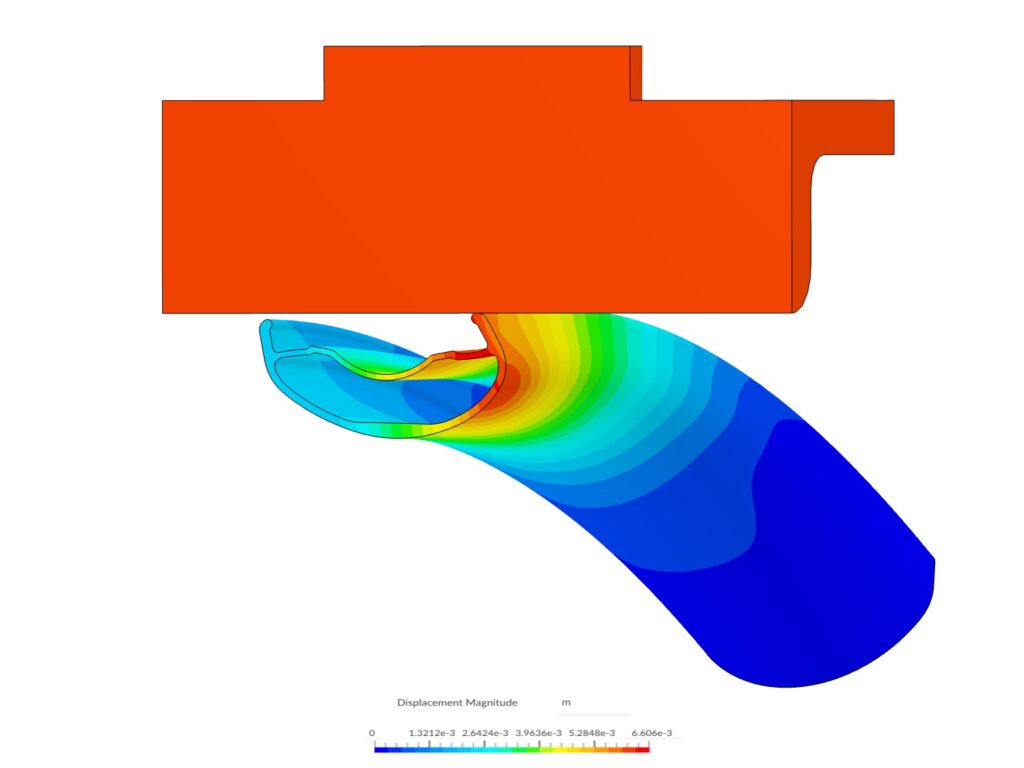
For example, Hunt Bike Wheels used SimScale to design its Endruro wide and Trail wide alloy mountain bike wheels. FEA was performed as strength and durability are paramount to ensure safe operation under high impact and load conditions. SimScale allowed the company to optimize the design of these wheels for durability and strength and to reduce the weight of the wheels. As a result of using SimScale, Hunt Bike Wheels has been able to shorten its product development cycle from two years to six months and has saved £30,000 in R&D costs due to less reliance on wind-tunnel testing.
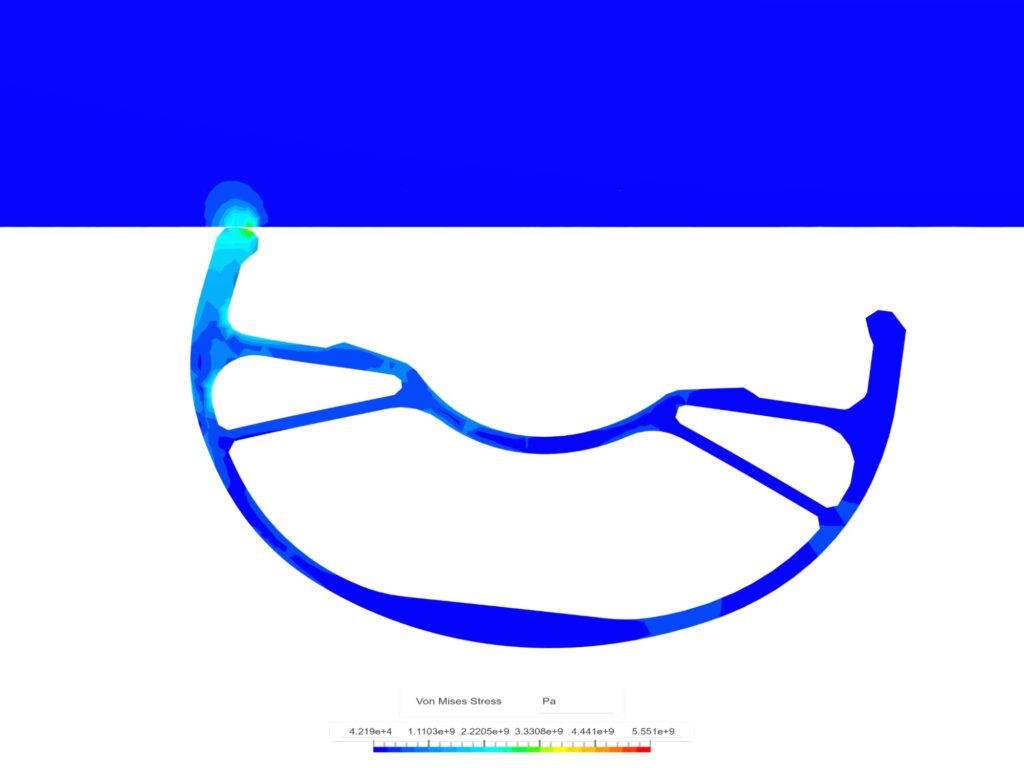
SimScale is a powerful tool that has allowed us to accelerate product development. Hunt Bike Wheels has been able to use SimScale to shorten its product development cycle, save money, and improve the performance of its wheels. We found it easy to use and the technical support provided is so fast and reliable. Our project development cycle has decreased from 2 years down to less than 6 months.
Patrick Brown (MEng)
Design Engineer at Hunt Bike Wheels
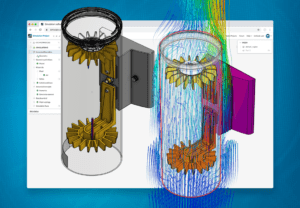
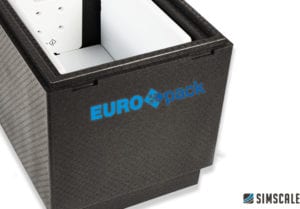
Sign up for SimScale
and start simulating now